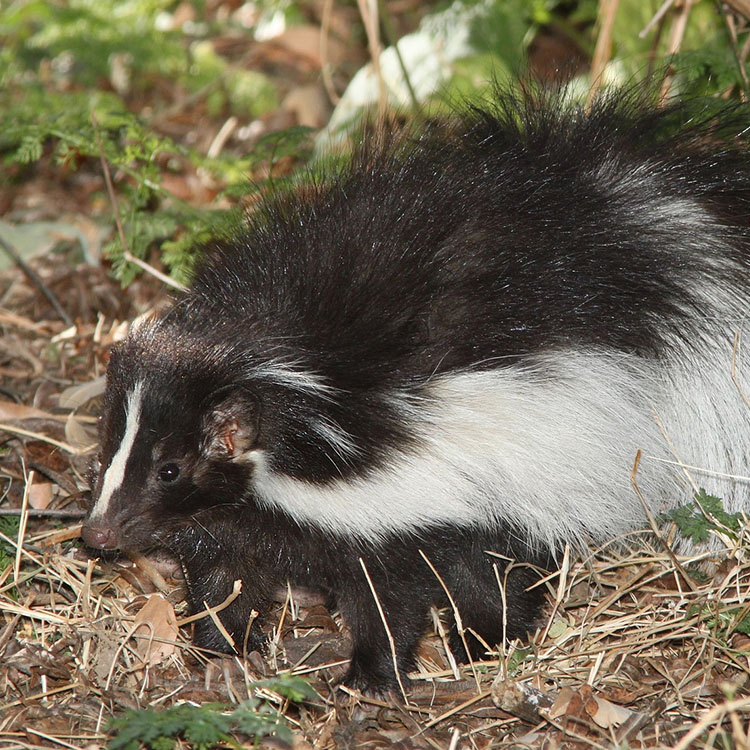DIY Skunk Control Guide
You can recognize a skunk from its odor or from its distinctive black and white coloring, the latter color forming a stripe down the middle of its back. Most people are more familiar with the spray that a skunk uses when it is threatened than the animal itself. It has a very pungent odor that is generally regarded as unpleasant. Because it is an oily liquid material, it will stick to skin, hair, and clothing, and take a special mixture of chemicals to remove completely. Skunks are a tricky animal to trap because of this rare type of defense mechanism. Skunk spray comes from scent glands located in the anus of the skunk. Skunk odor smells strongly of sulfur because the material made in these glands contains sulfur, as well as other natural chemicals. The spray will have a yellowish tint and is called mercaptan. With a maximum range of 10-15 feet, a skunk doesn't have to be near you to spray you.

Small children, pets, and curious adults sometimes get themselves sprayed by a skunk. Tomato paste may neutralize the odor so some degree because of the acids inside of the paste, but a more effective solution combines 3 ingredients that you will most likely have in your home already. Mixing together a teaspoon of dish soap, 1/4 cup baking soda, and 1 quart of hydrogen peroxide, and applying this mixture to the spray, will neutralize it completely. Skunk spray can cause a burning sensation on open wounds and eyes. The spray can cause temporary blindness when it comes into contact with eyes as well. You can't become venomed from a small amount of skunk spray, but it can cause swelling and inflammation when inhaled by animals at close range, or if it gets into their eyes.
Most trappers will use a large cage trap with bait that contains meat or meat odors to trap a skunk. Be aware that this type of trap will also attract other animals like raccoons. If a skunk is inside a live cage trap like this, most people worry about getting sprayed. There are types of traps that are completely enclosed that you can use, but skunks will be much more skeptical of these. If you are not able to trap the skunk, a skunk exclusion may be all you need to solve your skunk problem. Check for damaged fencing, holes underneath the fenceline, and make sure your gates close properly. Skunks tend to wander around looking for food and won't stay in the same place for very long. If you stop seeing skunks after you've made some repairs and filled in some holes, you've successfully excluded the skunks. If the skunk is still inside your property line, you will need to use a trap to remove and relocate the skunk. Professional wildlife services will do this for you, or you can consult with your local fish and game commission to find out where you can set the skunk free.
